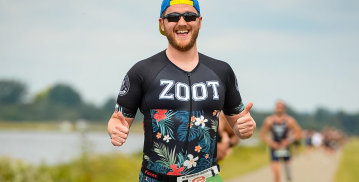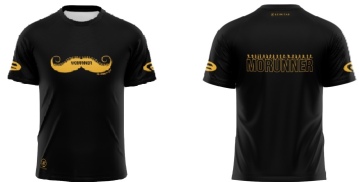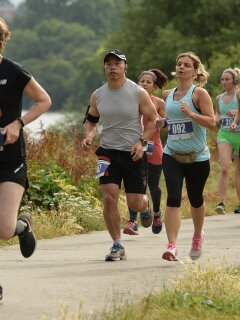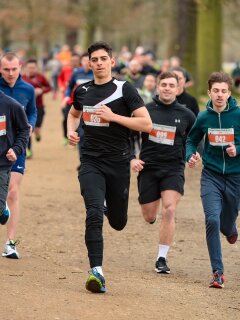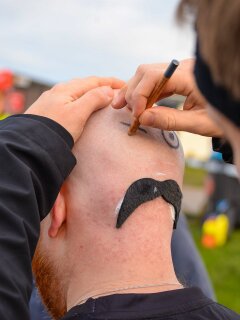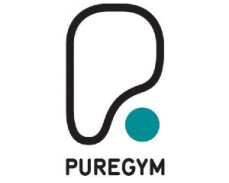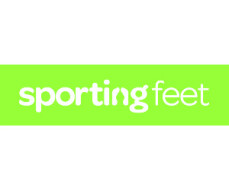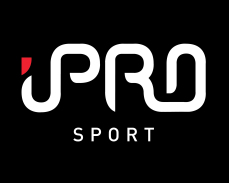February 06, 2019
Triathlon
By Speedy Swimming Coaching
Visit Speedy Swimming for more tips and advice here
How did you get on with the Swolf session from the last blog
So in the last blog we wrote about analysing and improving your swim efficiency with a Swolf swim set. This should have you thinking ‘how can I hold my pace and swim faster’.
In this blog we'll be delving deeper into how you can swim more efficiently.
Maybe you're thinking, well if my swim stroke falls apart a bit when I'm swimming faster, then how do I correct it, and more importantly know what to correct?
For example:
If your arms are too straight in the catch and pull phase, or you have a crossover of the mid line of your body with your hands, you bend your knees to kick, or over rotate your hips to one side and not the other, or breathe from your chest and not your diaphragm, then there are areas you would want to focus on and improve.
Try doing the following set as a variation on the swolf one.
Swim golf set
6 x 50 metres Front Crawl with 20 seconds rest
Count your strokes and time the 50m.
Add the 2 together.
Try and hold the cumulative number of strokes and time over the course of the 6 x 50 m FC
One of the ways we measure this is by using a Swim golf session regularly as above every 4 weeks, as a benchmark for syour swim efficiency. The adage "If you're not assessing you're guessing" rings true here.
This should also be coupled with the following areas too:
-
Stroke rate
-
Stroke count (or distance per stroke)
-
Technique and how much water you're pushing behind yourself
-
Pacing and the law of diminishing returns
These can all merge into a grey area all together, and become a bit confusing, so we're keeping them to the above headings and talking about them separately below:
1. Stroke rate
We know that for many swimmers, and particularly beginners, when your stroke rate is below 60 per minute, you won't have constant motion through the water. It will be more of a stop / start, since you'll be gliding too far on each stroke, and effectively speeding up and slowing down on each stroke. If you're stroke count is between 40 and 50 you'll be doing this for sure, and probably swimming with straight arms underwater.
You can measure and improve this by using a tempo trainer in mode 3, and gradually increasing your stroke rate by 2 every 50 metres. We would recommend you do this with a coach, so they can check the point where you reach the law of diminishing returns.
2. Stroke count
If you're doing more than 28 strokes per 25 metre length, then you would be wise to try and reduce this to increase your distance per stroke (DPS) to a more efficient level under 25 per length. The theory here is that your hand and forearm would be slipping through the water more, instead of catching the water better with a high and early vertical forearm. This links in with your technique and pacing.
You want to try and increase your DPS which will see a subsequent reduction in your stroke count without increasing your stroke count. You might also be crossing over the mid-line of your body, kicking incorrectly, have poor body position etc.
3. Technique
Maintaining positive pressure on the water with your hand, all the way through the stroke underwater, is vital to get the most from your distance per stroke. Achieving an early vertical forearm position of around 90 -100 degrees, a high body position, kicking with your legs straight, and rotating your body evenly to 45 degrees on a long axis from your core and hips will make you much more streamlined and improve your swim efficiency.
4. Pacing and the law of diminishing returns
Maintaining your technique at race pace, or when working hard, is something you need to become inherently aware of, and understand which technique limiters might arise as you become either tired or are working at 80% effort or above.
This is known as your "T pace." This would be equivalent to your average 100 metre pace for 1500 metres at 80 per cent effort.
Have you ever completed a swim session or race and held your pace evenly throughout, or did it gradually drop away as the distance crept up? Finishing an interval set or distance with your 1st 1-2 x 100 metres at a much faster pace is a sign of poor pacing, as is a pace that gradually gets slower which may be stamina and technique related.
If the former is the case, then you should examine why this is, and work to correct it as soon as possible. A coach can help you with this by monitoring and analysis of your workouts and annual training plan. Stamina should be addressed with strength training and the correct scheduling of progressive sessions on a periodisation model suited to your events.
Swim this set and try and hold your pacing and stroke count throughout:
All at 75% effort
1. 4x 100 FC pace control on @75% 30 rest
2. 400 FC @ same pace as 100’s maintaining stroke count - 45 rest
3. 4x 100 FC pace control on @75% 25 rest
4. 400 FC @ same pace as 100’s with stroke count minus 2 per length – 40 rest
How did you get on? Were they all evenly paced, or did they vary a lot?
Understanding how to pace yourself is key for your swim or triathlon events. This is obviously a tricky thing to do in open water and to some degree in the pool, as you only find out how you have performed after completing the interval.
So, we must develop an inherent feel for how the effort should be in training, by doing lots of repeats at your race pace. This is going to be different for different distances, getting slightly slower per 100 metre pace as the distance becomes longer.
Using a tempo trainer is one method of measuring and helping to control your swim pacing and stroke rate. We'll cover this in a future blog soon.
What is it the faster or elite swimmers are doing underwater to swim faster and more efficiently?
• Achieving a higher elbow position
• Holding the water better to push more behind them
• Utilising a powerful front crawl stroke by maintaining positive pitch with the water
• Driving the body over the hand and arm that have just purchased the water
• Kicking effectively with straight legs from the hips
• A good balance of stroke count and stroke rate
3 ways to get faster:
1.Less strokes / same time
2.More strokes / less time
3.Less strokes / less time
3 drill to practice which help:
1. Swim over a barrel
2. Power Push
3. Bodyroll

